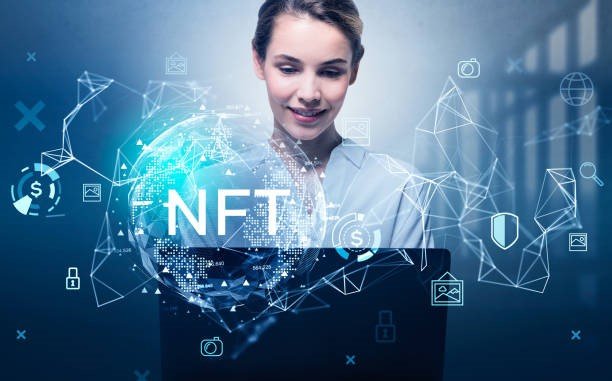NFTs, or non-fungible tokens, are digital assets that are unique and not interchangeable. NFTs can represent anything from digital art and collectibles to in-game items and crypto assets. Because NFTs are not interchangeable, they can be used to track the ownership and provenance of digital assets. This makes NFTs well-suited for applications like digital art, collectibles, and gaming. If you’re interested in developing applications that use NFTs, there are a few things you need to know. In this article, we’ll cover everything you need to know about NFT development, including.
What Are NFTs?
NFTs are digital assets that are unique and not interchangeable. NFTs can represent anything from digital art and collectibles to in-game items and crypto assets.
Because NFTs are not interchangeable, they can be used to track the ownership and provenance of digital assets. This makes NFTs well-suited for applications like digital art, collectibles, and gaming.
NFTs are built on blockchain technology. A blockchain is a distributed database that is used to record transactions. NFTs are stored on a blockchain and each NFT has a unique identifier.
The most popular NFT platforms are Ethereum, Bitcoin, and EOS. Ethereum is the most popular platform for NFT development because it supports smart contracts. Smart contracts are programs that can be used to automate transactions.
The Benefits of NFT Development
The number of NFT developers out there is increasing and there are a number of benefits to NFT development, including:
NFTs offers a new way to monetize digital assets. NFTs can be used to sell digital art, collectibles, and in-game items. NFTs can also be used to represent ownership of real-world assets, like property or copyright.
NFTs offers a new way to engage with digital content. NFTs can be used to add scarcity and value to digital content. NFTs can also be used to create new experiences, like virtual worlds and games.
NFTs have the potential to create new economic models. NFTs can be used to represent ownership of assets and to create new markets. NFTs can also be used to raise funds for projects and businesses.
Steps to Making an NFT
There are three main steps to making an NFT:
1. Generate Your Artwork
This is the first and most important step! You need to generate your artwork. This can be done with any digital tool, such as Photoshop, Illustrator, or Blender.
2. Convert Your Artwork to an NFT File Format
Once you have your artwork, you need to convert it to an NFT file format. The most popular NFT file formats are JPEG, PNG, and GIF.
3. Upload Your NFT to an NFT Marketplace
The last step is to upload your NFT to an NFT marketplace. The most popular NFT marketplace is OpenSea. Other popular NFT marketplaces include Rarible, SuperRare, and Foundation.
Benefits of NFT Development
There are many benefits to developing applications that use NFTs. Here are some of the most notable benefits:
NFTs can be used to track the ownership and provenance of digital assets. This is valuable for applications like digital art, collectibles, and gaming.
NFTs are stored on a blockchain, which is a distributed database. This means that NFTs are decentralized and not controlled by any single entity.
NFTs can be bought, sold, or traded on NFT marketplaces. This provides liquidity for NFT owners and developers.
Challenges of NFT Development
There are also some challenges that come with NFT development. Here are some of the most notable challenges:
NFTs are still a new technology and there is a lack of adoption. This means that it can be difficult to find buyers for your NFTs.
NFT marketplaces are still emerging and there is no clear market leader. This can make it difficult to find a place to sell your NFTs.
NFTs are stored on a blockchain, which is a public database. This means that NFTs are visible to everyone and their transactions are public.
Frequently Asked Questions
Here are some frequently asked questions about NFT development:
1. What is the best NFT marketplace?
There is no clear market leader yet, but some of the most popular NFT marketplaces include OpenSea, Rarible, SuperRare, and Foundation.
2. What is the best NFT file format?
The most popular NFT file formats are JPEG, PNG, and GIF.
3. How do I generate my artwork?
You can use any digital tool to generate your artwork, such as Photoshop, Illustrator, or Blender.
4. How do I convert my artwork to an NFT file format?
You can use a service like NFT.io to convert your artwork to an NFT file format.
5. How do I upload my NFT to an NFT marketplace?
The most popular NFT marketplace is OpenSea. Other popular NFT marketplaces include Rarible, SuperRare, and Foundation.
Conclusion
NFT development is a process of creating, distributing, and promoting non-fungible tokens. NFTs are digital assets that are unique and cannot be exchanged for other assets. They are often used to represent ownership of digital or physical items, such as art, collectibles, and gaming items. NFT development typically involves creating artwork, converting it to an NFT file format, and then uploading it to an NFT marketplace. There are many benefits to NFT development, such as the ability to track ownership of digital assets and the decentralization of NFTs. However, there are also some challenges, such as a lack of adoption and the visibility of NFT transactions Read more
















